chloro-tri(propan-2-yl)stannane

chloro-tri(propan-2-yl)stannane structure
|
Common Name | chloro-tri(propan-2-yl)stannane | ||
|---|---|---|---|---|
| CAS Number | 14101-95-2 | Molecular Weight | 283.41700 | |
| Density | N/A | Boiling Point | 219.8ºC at 760mmHg | |
| Molecular Formula | C9H21ClSn | Melting Point | N/A | |
| MSDS | N/A | Flash Point | 86.7ºC | |
| Name | chloro-tri(propan-2-yl)stannane |
|---|---|
| Synonym | More Synonyms |
| Boiling Point | 219.8ºC at 760mmHg |
|---|---|
| Molecular Formula | C9H21ClSn |
| Molecular Weight | 283.41700 |
| Flash Point | 86.7ºC |
| Exact Mass | 284.03500 |
| LogP | 4.40070 |
| Vapour Pressure | 0.173mmHg at 25°C |
| InChIKey | DDFYIVSQEDKSGY-UHFFFAOYSA-M |
| SMILES | CC(C)[Sn](Cl)(C(C)C)C(C)C |
|
Section 1: Product Identification Chemical Name:Tri-i-propyltin chloride, min. 98% CAS Registry Number:14101-95-2 Formula:(C3H7)3SnCl EINECS Number:none Chemical Family:organotin compound Synonym:Chlorotriisopropylstannane, Chlorotriisopropyltin
Section 2: Composition and Information on Ingredients IngredientCAS NumberPercentACGIH (TWA)OSHA (PEL) Title compound14101-95-2100%0.1mg/m3 (Sn-org)0.1mg/m3 (Sn-org) Section 3: Hazards Identification Emergency Overview:Toxic if swallowed. Severe irritant by inhalation and in contact with skin. Primary Routes of Exposure:Ingestion, inhalation, skin, eyes Eye Contact:May cause severe irritation to the eyes. Skin Contact:May causes severe irritation of the skin. Forms hydrogen chloride upon exposure to the atmosphere. Inhalation may lead to irritation of the respiratory Inhalation: tract. Ingestion:Toxic if swallowed. Toxic by inhalation, in contact with skin and if swallowed. May be irritating to skin, eyes and respiratory tract. Acute Health Affects: May cause eye and skin burns, dyspnea (breathing difficulty) and pulmonary edema. Chronic Health Affects:No information on long-term chronic effects. NTP:No IARC:No OSHA:No SECTION 4: First Aid Measures Immediately flush the eyes with copious amounts of water for at least 10-15 minutes. A victim may need Eye Exposure: assistance in keeping their eye lids open. Get immediate medical attention. Wash the affected area with water. Remove contaminated clothes if necessary. Seek medical assistance if Skin Exposure: irritation persists. Remove the victim to fresh air. Closely monitor the victim for signs of respiratory problems, such as difficulty Inhalation: in breathing, coughing, wheezing, or pain. In such cases seek immediate medical assistance. Seek medical attention immediately. Keep the victim calm. Give the victim water (only if conscious). Induce Ingestion: vomiting only if directed by medical personnel. SECTION 5: Fire Fighting Measures Flash Point:not applicable Autoignition Temperature:none Explosion Limits:none Extinguishing Medium:carbon dioxide, dry powder or foam If this product is involved in a fire, fire fighters should be equipped with a NIOSH approved positive pressure Special Fire Fighting Procedures: self-contained breathing apparatus and full protective clothing. Hazardous Combustion andIf involved in a fire this material may emit hydrochloric acid fumes. Decomposion Products: Unusual Fire or Explosion Hazards: No unusual fire or explosion hazards SECTION 6: Accidental Release Measures Spill and Leak Procedures:Small spills can be mixed with vermiculite or sodium carbonate and swept up. SECTION 7: Handling and Storage Store material in a tightly sealed container away from moisture. If possible, handle material in an efficient fume Handling and Storage: hood. Prolonged exposure to the atmosphere will lead to degradation of the product. SECTION 8: Exposure Controls and Personal Protection Eye Protection:Always wear approved safety glasses when handling a chemical substance in the laboratory. Skin Protection:Wear protective clothing and gloves. Consult with glove manufacturer to determine the proper type of glove. Ventilation:Handle the material in an efficient fume hood. If ventilation is not available a respirator should be worn. The use of respirators requires a Respirator Respirator: Protection Program to be in compliance with 29 CFR 1910.134. Ventilation:Handle the material in an efficient fume hood. Additional Protection:No additional protection required. SECTION 9: Physical and Chemical Properties Color and Form:colorless liquid Molecular Weight:283.43 Melting Point:no data Boiling Point:no data Vapor Pressure:no data Specific Gravity:no data Odor:not determined Solubility in Water:insoluble SECTION 10: Stability and Reactivity Stability:air and moisture stable Hazardous Polymerization:no hazardous polymerization Conditions to Avoid:none Incompatibility:strong oxidizing agents and halogens Decomposition Products:carbon monoxide, carbon dioxide, hydrochloric acid, organic fumes, and tin oxychlorides. SECTION 11: Toxicological Information RTECS Data:Oral(rat); LD50: 44mg/kg. Carcinogenic Effects:no data Mutagenic Effects:no data Tetratogenic Effects:no data SECTION 12: Ecological Information Ecological Information:Very toxic to aquatic organisms. May cause long-term adverse effects in the aquatic environment. SECTION 13: Disposal Considerations Disposal:Avoid release to the environment. Dispose of according to local, state and federal regulations. SECTION 14: Transportation Shipping Name (CFR):Organotin compounds, Liquid, N.O.S. Hazard Class (CFR):6.1 Additional Hazard Class (CFR):NA Packaging Group (CFR):II UN ID Number (CFR):UN# 2788 Shipping Name (IATA):Organotin compound, Liquid, N.O.S. Hazard Class (IATA):6.1 Additional Hazard Class (IATA):NA Packaging Group (IATA):II UN ID Number (IATA):UN# 2788 SECTION 15: Regulatory Information TSCA:Not listed in the TSCA inventory SARA (Title 313):Title compound not listed Second Ingredient:none SECTION 16 - ADDITIONAL INFORMATION N/A |
CHEMICAL IDENTIFICATION
HEALTH HAZARD DATAACUTE TOXICITY DATA
|
| HS Code | 2931900090 |
|---|
|
~% 
chloro-tri(prop... CAS#:14101-95-2 |
| Literature: Gmelin Handbook: Sn: Org.Verb.1, 1.1.1.4.3, page 92 - 93 |
|
~0%
Detail
|
| Literature: Gmelin Handbook: Sn: Org.Verb.1, 1.1.1.4.3, page 92 - 93 |
|
~% 
chloro-tri(prop... CAS#:14101-95-2 |
| Literature: Gmelin Handbook: Sn: Org.Verb.2, 1.1.2.4, page 270 - 272 |
|
~% 
chloro-tri(prop... CAS#:14101-95-2 |
| Literature: Gmelin Handbook: Sn: Org.Verb.2, 1.1.2.4, page 270 - 272 |
|
~% 
chloro-tri(prop... CAS#:14101-95-2 |
| Literature: Gmelin Handbook: Sn: Org.Verb.2, 1.1.2.4, page 270 - 272 |
|
~% 
chloro-tri(prop... CAS#:14101-95-2 |
| Literature: Abraham, M. H.; Grellier, P. L. J. Chem. Soc. Perkin Trans. II, 1973 , p. 1132 - 1137 |
|
~% 
chloro-tri(prop... CAS#:14101-95-2 |
| Literature: Gmelin Handbook: Sn: Org.Verb.1, 1.1.1.4.3, page 92 - 93 |
|
~% 
chloro-tri(prop... CAS#:14101-95-2 |
| Literature: Gmelin Handbook: Sn: Org.Verb.1, 1.1.1.4.3, page 92 - 93 |
|
~% 
chloro-tri(prop... CAS#:14101-95-2 |
| Literature: Gmelin Handbook: Sn: Org.Verb.2, 1.1.2.4, page 270 - 272 |
| HS Code | 2931900090 |
|---|---|
| Summary | 2931900090. other organo-inorganic compounds. VAT:17.0%. Tax rebate rate:13.0%. Supervision conditions:AB(certificate of inspection for goods inward,certificate of inspection for goods outward). MFN tariff:6.5%. General tariff:30.0% |
| Triisopropyltin chloride |
| Chlorotriisopropylstannane |
| Triisopropylzinnchlorid |
| Triisopropylchlorostannane |
| Stannane,chlorotriisopropyl |
| Tri-i-propylzinnchlorid |
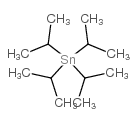

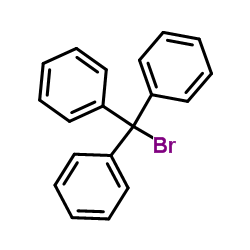

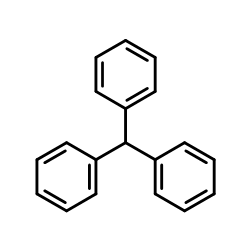

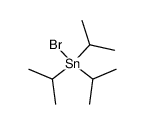


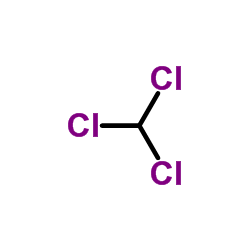

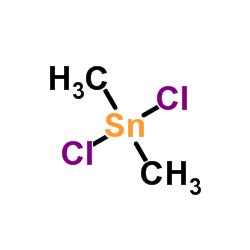
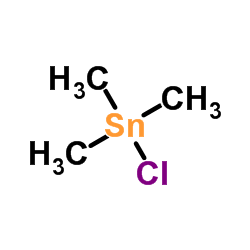
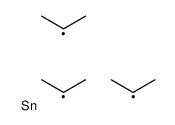 CAS#:759-23-9
CAS#:759-23-9